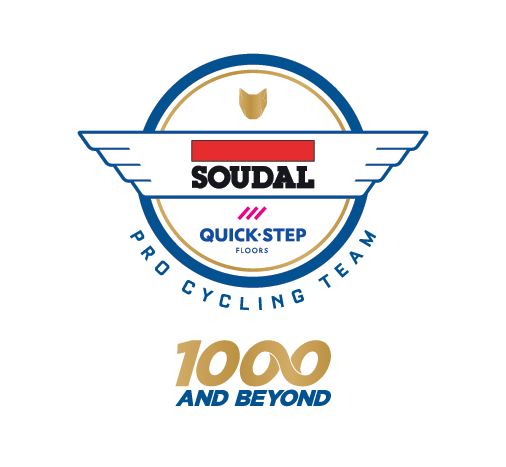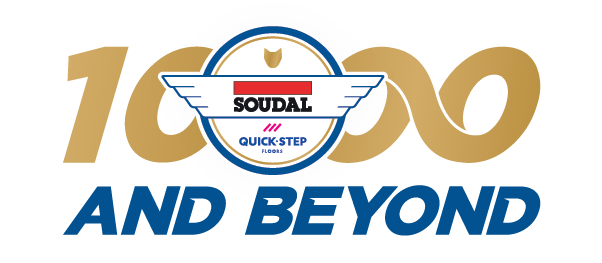During a recent team gathering in Belgium, many of our riders met with the Retül bike fit team to optimise their position on the bike and to help them prepare for the 2022 season.
We sat down with Jason Williams from Retül, who talked us through what they do with our riders and how it will benefit them in the coming year, and how a Retül bike fit could benefit every rider and help them enjoy their cycling more.
“It is quite a broad spectrum that we offer the Deceuninck – Quick-Step guys, depending on the time of year that we meet the riders. In October we will do an initial setups on the time trial and road bikes for guys joining the team, looking to get them dialled in to a new bike and document their position. This can help the mechanics to set up their bikes initially and ease their transition to a new bike and give them a great starting point to get on and train. It is really about helping the riders and the mechanics get a good start.
When we meet them again in December it tends to be a little more in depth – they have had some time to train and time on the bike and can offer us more feedback on the feeling that they are getting, that we can respond to. We can do some fine tuning and make adjustments based on what they can tell us. In December we also conduct metabolic testing to measure efficiency on the bike, we do aero testing at the velodrome and fitting equipment, so it’s an even broader spectrum again at the second meeting.

Where the Retül system is effective when trying to find a good position is that it is not based on an opinion – it is based on the data that has been gathered from thousands of riders, for over a decade. It is a really rich base of data that has been collected from bike fits on arange of riders, from elite pros to everyday riders, from around the world, that we can reference for optimized joint angles. Every new rider that we fit gets measured and this gets added to the database, so we are still gaining more insights as we work to build those reference points.
Retül is a dynamic 3-dimensional bike fit system that measures every joint angle of the rider, as they are pedalling. It is dynamic because it is measuring as they are moving, and how their body is responding under load, in real conditions and this is very different to how the body responds when the rider stops, and we measure the point at the top and the bottom of the action. So, it is very realistic to how they will feel when they are out on the road. We also do a bilateral capture, which means images are taken left and right, so we can analyze any imbalances that a rider may have and also identify where problems may arise, based on the data. This means that if there is a data point or a number that is out of range and it is also associated with an injury or problem area, that is room for usto make a positive change to remedy pain and discomfort, or to optimise the rider’s position. For more performance-based fitting, the data allows us to push the boundaries of what is possible. For the elite riders we want to give them a position that gives them optimal performance and efficiency, while still being comfortable and sustainable, and avoiding injury.
Time trial and triathlon is an area where most people can visualise and understand the work that we do. Most of the work then is done on a fitting bike – in our case the Retül Müvewhich is a fully adjustable sizing bike. So instead of working with a built-up Specialized Shiv, we do our testing on a fitting bike where we can easily make and try a range of adjustments and very quickly let the rider and the Retül data guide us to a healthy position that is efficient, and fast, and comfortable. We then document that and then apply it to an actual bike. That is really effective with a TT bike because it really does let the rider try out a number of options to find what is best for them, and then build up an actual Shiv based on those specifications.

One of the more common things that we work with riders on is cleat placement – it is something that every rider can have issues with, from the elite competitors down to the everyday rider. A good session with a trained fitter is vital to get that right, whether it be because of a new set of cleats, some new shoes or changing pedal system. A bit of time with a trained fitter, even if it is not a full fit, will get you to a point where you can feel good about the rotation, the fore and after and the lateral adjustment, to help avoid knee pain, which is a common complaint in many cyclists. Certainly, in this context we do a lot of work with the elite riders to try to remedy any questions about cleat position, but it can be great for all riders to do. Saddle discomfort is also huge, so we want to make sure that every rider is on the right saddle, with the right width and shape and a lot of work we do is guiding them to the correct design. This is also big for non-elite riders, as we only have a finite number of contact points with the bike; shoes and cleats, saddle, and then the handlebars. We do a lot of customization and the handlebar and cockpit area, as people like to optimise to their individual preference that is appropriate to their needs.
What is interesting is that Retül started by learning from the Elite pro athletes and then took it to the public and transferred it to everyday riders in the same way we would do with the professionals. We take that data and we can use it to benefit a normal person that just likes to ride a bike. One of the most common things that I hear after a person has had a bike fit is ‘Why did I wait so long to have this done!’, and people are always amazed by how much they can gain. It is time and attention that can optimise the support for that rider and every fit session is for the individual – whether it’s a Sunday cruiser or a Tour de France professional, it is tailored to the individual.”


